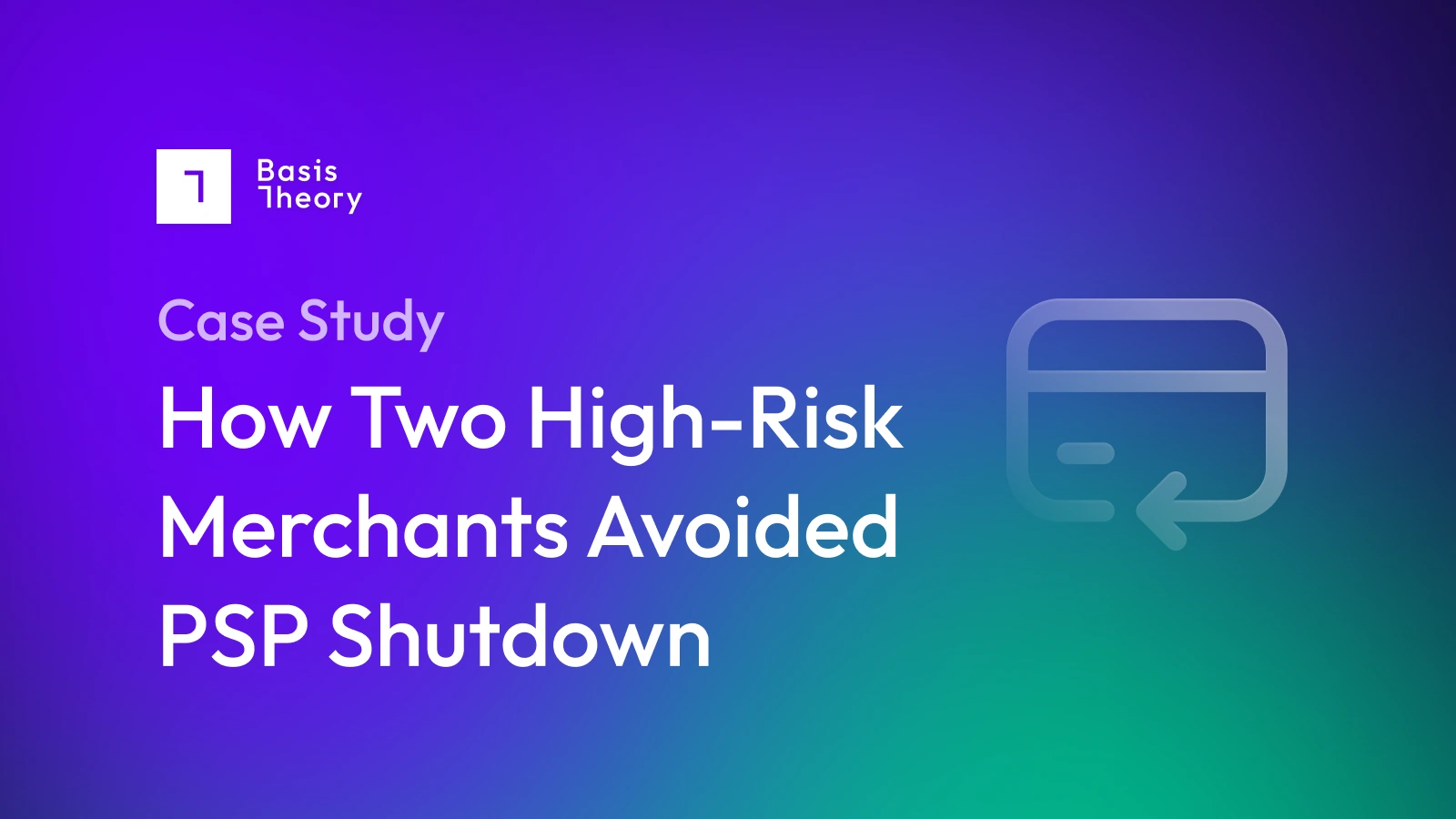A Tale of Two Merchants: How They Avoided PSP Shutdown
Overcame
PSP Shutdown
Built
Redundant Systems
Reduced
PCI Burden
Key Insights
-
Sudden Service Interruption: Both merchants experienced abrupt shutdowns by Stripe, with one receiving a 14-day transaction limit and 90-day disbursement hold, and the other facing a complete shutdown for 24 to 36 hours.
-
Challenges in Support Communication: The hair growth e-commerce merchant had to persistently contact Stripe support to get live again.
-
Importance of Redundancy: The weight loss merchant recognized the need for redundancy in payment processing to mitigate risks associated with reliance on a single PSP.
-
Implementing a Third-Party Vault: To regain control over payment processing, the weight loss merchant built a CDE with Basis Theory, enabling secure card data collection and flexible payment routing to alternative PSPs.

Name
Industry
Features
- Basis Theory Elements
- Proxy

Payment processing in higher risk industries often comes with the fear that the processor could halt payouts at any point - potentially without warning. For two higher-risk merchants, this came true.
Unexpected Stripe Shutdown
One day, the owner of a hair growth e-commerce company logged into his Stripe dashboard to find a red warning that said he’d be able to transact only for another 14 days and could not take any disbursements for 90 days. This, essentially, was all the notification this merchant received that it needed to stop using Stripe to accept payments, and to find an alternate solution quickly.
Meanwhile, another merchant, one that prescribes and sells weight loss medicine online, faced a similar, but even more abrupt, fate with Stripe. The owner received the same warning on his account, but had a more severe issue with payment processing.
“Stripe fully shut us down for 24 to 36 hours,” the owner stated.
So, he knew he had to find a payment solution, and fast.
Different Paths to Payment Success
Persistence with Stripe Support
The owner of the hair growth company immediately began reaching out to anyone that could get him connected to the right people at Stripe to address the issue. After several calls and emails to Stripe support, he finally got on the call he had been hoping for.
“I got connected with someone right out of college who had literally only been at Stripe for four months,” the owner said. “After discussing my case with her, she turned on our account.”
By leveraging time, persistence, and finding luck on the phone, the hair regrowth company could continue transacting with Stripe. It is yet to be seen if this stroke of luck offers the company a long-term payment solution or a short-term fix.
Building Redundancies
The weight loss merchant found a different path to payment success. The owner felt he had effectively two options for success: connect with Stripe support like the hair regrowth company did, or build redundancies. His outreach to Stripe was unsuccessful, so building redundancies through a third-party vault offered the better long-term solution.
“I need redundancy. The same way we learned during the SVB fallout that you should have an account with two banks. At best or worst, I've now learned that we should have two MIDs [merchant IDs] to prevent frantic work to get back up-and-running,” the owner said.
The owner sought out centralized vaulting solutions that would give this company control to migrate off Stripe and onto other PSPs. During this search, the team found Basis Theory.
By implementing Basis Theory Elements for card collection on the frontend, and proxying to a new PSP, this company quickly took control of payment processing and is on its way to flexible, secure, and reliable payment routing for now - and into the future.
How Basis Theory Helps High-Risk Merchants
Basis Theory can assist high-risk merchants that would like to secure their payments, achieve PCI compliance, and maintain ownership over their payments data. Instead of chasing down PSP support that may lead to a dead end, take control of your payments data now before you lose the ability to transact.
Outsourcing your CDE to Basis Theory not only takes away a significant portion of the burden to maintain compliance, but it also provides freedom in the form of network-agnostic tokens that growing merchants can use with any PSP, partner, or network.
.png?width=365&height=122&name=BTLogo%20(1).png)


